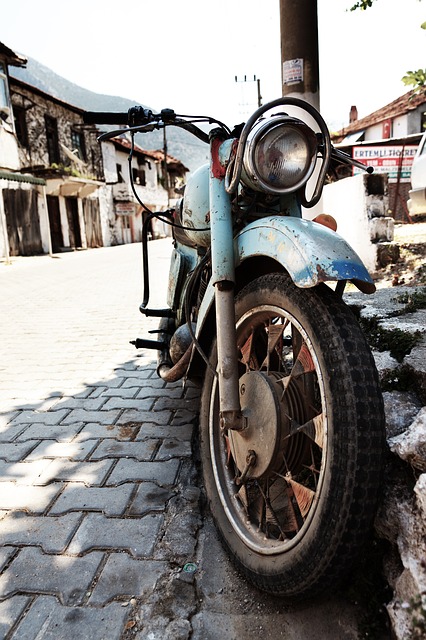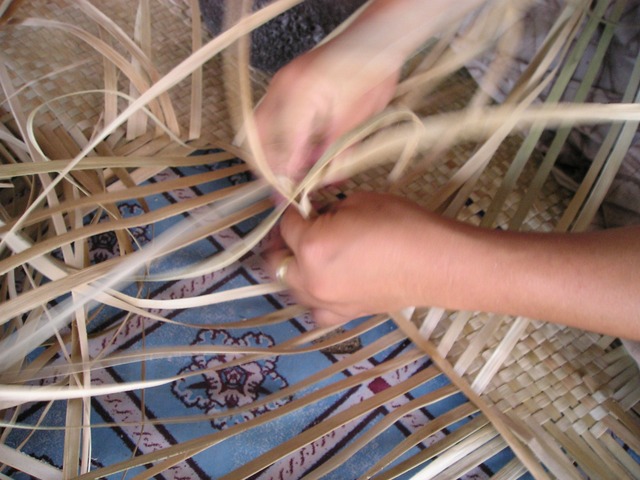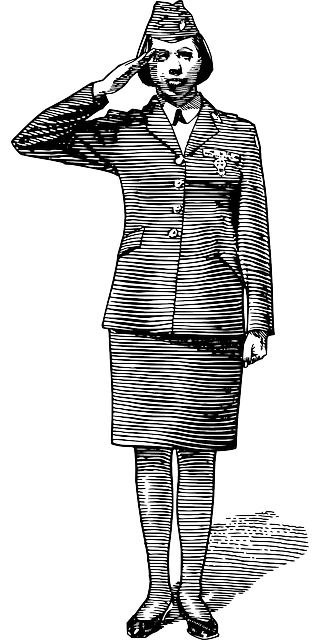إل گريكو
| إل گريكو |
|---|
إل گـريـكــو El Greco (1541 - سبعة أبريل 1614) ، كان رسام ونحات, ومعماري في عصر النهضة الاسبانية. وكان عادة يسقط على لوحاتها بحروف يونانية لإسمه كاملا Doménicos Theotokópoulos (باليونانية: Δομήνικος Θεοτοκόπουλος), مؤكدا أصله اليوناني.
إلجريكو1548،يا ترى؟ - 1614
كان في كريت مسقط رأسه يسمي نفسه كرياكوس ثيوتوكوبولس- أي الابن الإلهي للرب، وفي إيطاليا سمي دومنيكوتيوكوبولو؛ وفي أسبانيا دومنجوتيوتوكوبولي، وكان يسقط بالحروف اليونانية دومنيكوس تيوتوكوبولس، واختزل الزمن اسمه إلى الجريكو، وهوالكنية التي اشتهر بها في اسبانيا. ولا نعهد شيئاً عن حياته في كريت. ولعل أجداده هاجروا إليها من القسطنطينية بعد ان فتح المسلمون هذه المدينة اليونانية (1453)؛ على أية حال كان يستطيع في كريت، كما استطاع في البندقية بعد ذلك، حتى يشعر بتأثير الفسيفساء البيزنطية الصارم. وكانت كريت في حياته ملكاً للبندقية ، لا عجب إذن حتى يستقل الفنان الصغير السفينة إلى مدينة البحيرات، تجيش في صدره الآمال بعد ما سمع عن بلوغ التصوير أوجه فيها، وأغلب الظن أنه انضم إلى الجالية اليونانية الكبيرة في تلك العاصمة العالمية.
إيطاليا
ودرس على يد تتسيانوعامين أواكثر، وأعجب بفن تنتوريتوفي جمعه الوجوه في صور مزحومة، وربما سرى إليه فيرونيزي بالثياب الفاخرة البهية. وقد نسخ الصور الشهيرة بتواضع صابر في البندقية وريدجواميليا، وبارما ، وفلورنسا ، ووصل إلى روما عقب وفاة ميكل أنجيلو(1564). وأول ذكر محدد لدينا عنه ورد في خطاب خطه جوليوكلوفيوإلى الكردينال أليساندروفارنيزي في 16 نوفمبر 1570 يقول فيه: "وفد على روما شاب من كانديا، تلميذ لتتسيانو، ومصور ذوموهبة نادرة في ظني. وقد رسم لنفسه صورة أطرها جميع المصورين في روما. وبودي لوضمتموه سيادتكم بالرعاية، دون أي اسهام في رزقه سوى اعطاءه حجرة في قصر فارنيزي".
اسبانيا
Immigration to Toledo
وقبل الكردينال، وكافأ إلجريكوكلوفيوبلوحة رائعة. وحين كثر اللغط حول العرايا في لوحة ميكل أنجلو"الدينونة الأخيرة" عرض دومنيكوحتى يرسم بدلا منها- إذا حملت- لوحة أخرى لا تقل عنها إتقانا وتمتاز بتغطية الأجسام على نحوأفضل ، فسقط في أعين فناني روما. وأبلغه بعض الأحبار الأسبان في روما حتى فليب الثاني يبحث عن مصورين لتزيين الاسكوريال. فرحل إلى أسبانيا عام 1572 بعد ان نفض عن قدميه غبار روما، ولكنه استبقى على فرشاته بعض انحرافات "اللازمية" الإيطالية.
وليس لدينا بعد ذلك عنه ذكر حتى عام 1575 ، حين نجده يصمم ويزين كنيسة "سانتودومنجوالأنتيجيو" في طليطلة ، العاصمة الدينية لأسبانيا. فرسم لمذبحها لوحة "صعود العذراء" الفخمة التي تحتل اليوم مكانا بارزاً في معهد الفن بشيكاغو- وهي تحذوفي نواح منها حذولوحة تتسيانو"الصعود" بالفراري في البندقية، وتلتزم الأجساد الفتية المفعمة شباباً والرؤوس الهرمة الجليلة التي درج عليها الأسلوب الإيطالي في التصوير. وفي عام 1577 رسم لكاتدرائية طليطلة لوح مشهورة سماها "تقسيم أثواب المسيح" وأخذت لجنة شكلت للحكم على الصورة عليها حتى سترة يسوع فاقعة الحمرة، وإن النساء اللاتي يرين في أسفل اليسار- المريمات الثلاثة- لا محل لهن هناك، لأن الأناجيل ذكرت أنهن كن ينظرن من بعيد، ومع ذلك أعرب القضاة حكمهم المتنبئ بأن الصورة "لا تقدر بثمن وأنها عظيمة القيمة " وكانت احدى المريمات منقولة عن خليلة المصور ، واسمها الدونا خيرونيما دلاس كيفاس، التي يظهر وجهها الحزين اللطيف في معظم عذارى إلجريكو. وهولم يتزوجها قط برغم وفائه لها وولائه للكنيسة، ولم تكن هذه عادة أسبانية قديمة بل عادة تقدست طويلاً في مراسم الفنانين.
ووصف محرر من الجيل التالي، يدعى خوزيه مارتينيث، دومنيكوبأنه أصبح الآن على ثقة من الخلود، نطق: "لقد استقر... في طليطلة، وأدخل أسلوباً شديد الإسراف بحيث لم ير إلا اليوم له نظير، ومحاولة البحث فيه تشوش أسلم العقول... وقد صرح بأن فنه لا يعلوعليه فن... وكان في طبيعته من الغلومثل ما في فنه... كان يقول إنه ما من ثمن يمكن حتى يوفي رسومه حقها، لذلك كان يرتهنها عند أصحابها، الذين يقرضونه عنها ما شاء عن طيب خاطر. وكان معماريا ذائع الصيت، عظيم البلاغة في أحاديثه، أما تلاميذه فقلائل، لأن أحدا لم يشأ ان يأخذ بأسلوبه المسرف المتقلب الذي لا يصلح إلا له"(11).
أعمال ناضجة وسنوات لاحقة
وحوالي عام 1580 أوفد فليب الثاني في طلب إلجريكوووكل إليه رسم لوحة "القديس موريس والفيلق الطيبي" وبعد جهد سنوات أربع قدم الفنان ثمرة تعبه للملك. غير حتى فليب عثر تجميع الأشخاص شديد الاختلاط، فدفع ثمن اللوحة ولكنه لم يقبلها، وعاد إلجريكومحزوناً إلى طليطية، ولم يبرحها بعد ذلك قط فيما نفهم .. وكان ذلك خيراً له، لأنه أصبح حراً في حتى يعود إلى طبيعته الصوفية. ثم رسم لكنيسة القديس توما (1586) أشهر صوره إطلاقاً، وكأنه كان بذلك يثأر لنفسه، وهي إحدى ذرى فن التصوير، وقد اشترط العقد حتى يبدي فيها الكهنة يحيون تقليداً يزعم حتى القديسين هبطوا من السماء ليدفنوا الدوق جونزالورويز، كونت أورجاز، وأن يمثل القديسان اسطفانوس وأوغسطين (في أثواب الأساقفة) وهما ينزلان الجثمان إلى قبره وسط جمع جليل من وجوه القوم، وفوق هذه الوجوه تبدي السماء المفتوحة ابن الله في مجده وبهائه. جميع هذا عمله بحذافيره وأكثر منه، فكل رأس تقريباً لوحة كاملة الصقل، والأرواب معجزة من المضى والخضرة والبياض، والدرع الدمشقي الحلية الذي يلبسه الكونت يتلألأ ضياء، رد على ذلك حتى الجريكونفسه يرى من خلف القديس اسطيفانوس. أما آية هذه الآية فرأس أوغسطين بقلنسوه ولحيته، أم لعلنا نؤثر عليه الجثمان الجميل،يا ترى؟ أم وجه القديس اسطيفانوس الحلو،يا ترى؟ أم الكاهن الأصلع يتلوصلاة الدفن،يا ترى؟ أم خورجي مانويل، بن الجريكوذا الثمانية الأعوام ممسكاً في فخر مشعلاً ومبرزاً من جيبه منديلاً ليظهر توقيع الجريكو،يا ترى؟ وفي كتاب فرانسسكودي بيزا "تاريخ طليطلة" (1612) نقرأ ما كان ينبغي حتى نحرزه: "إن لوحة (دفن الكونت أورجنز) هذه من أبدع الصور في إسبانيا بأسرها. والناس يؤمونها من جميع بلد غريب ليعجبوا بها إعجاباً خاصاً، وأهل طليطلة لا يملونها، بل يجدون فيها على الدوام جديداً يتطلعون إليه. وفيها يرى الكثير من مشاهير الرجال في عصرنا مصورين تصويراً واقعياً(12)." ومع ذلك كله راح مجلس الأبرشية يساوم على أتعابها، فحمل اليوناني الحاكي الطبع الأمر إلى القضاء، وكسب دعواه، وتسلم ألفي كراون.
إنه الآن لا يشكوقلة الطلب على رسومه، فلقد عثر نفسه، ولم يعد يفكر في تتسيانوولا تنتوريو، وقد استطاع حتى يجري تجاربه في إطالة الأشكال، لا لأنه يعاني من قصور في البصر، بل لأنه في أغلب الظن شعر بأنه بهذه الطريقة قد يرمز إلى التسامي الروحي لأشكاله- أجسام تمددها نفوس تشرأب إلى السماء. وفي لوحتي القديس أندراوس والقديس فرانسيس المحفوظتين بالبرادويظهر هذا النحول غير مفهوم ما لم نأخذ هذه الرمزية في الاعتبار. ونتذكر التماثيل القوطية التي ترفق مراعاة للقيود المعمارية. على حتى هذا كله يغتفر للفنان حين نصل إلى لوحته "القديس اليفونسو" التي رسمها لمستشفى الكاريداد باليسكاس، فهنا، في الروح الوقور الذي خلعه على رئيس الأساقفة الوسيط، وفي عقله المستغرق، ووجهه المتقشف، وشعره الأبيض الناحل، ويديه الرقيقتين- هنا تصور من أعمق تصورات الجريكو. "هذه الصورة وحدها تكفي جزاء وعوضاً عن الرحلة إلى إسبانيا".
ولا يدلنا القليل الذي نفهمه عن حياة الجريكوعلى أنه كان متديناً على الطريقة الأسبانية، ويبدوأنه كان يميل إلى اللذة لا إلى الورع. فحين رسم لوحة "العائلة المقدسة" لمستشفى تافيرا خلع على العذراء جمال الجسد لا وفاء الأم. أما لوحة "الصلب" ففيها فهم واسع بالتشريح، ولكنها باردة في العاطفة، وقد أحس جرونيفالد بمأساة الصلب تلك احساساً أعمق بكثير. ففي صوره الدينية لا يتجلى الجريكوإلا في اللوحات العارضة- كما نرى صورته هوبلحيته البيضاء ورأسه الاصلع في "يوم الخمسين". ولم يجد مشقة، في بلد يعج برجال الدين، في العثور على شخصيات قوية يصورها، كصديقه بارافيثينوالثالوثي (بوسطن) بوجهه نصف العالم ونصف عضومحكمة التفتيش، أورئيس المحكمة نفسه، الكردينال نينودي جيفارا (نيويورك)- وصورته لا ترقى إلى صورة فيلاسكويز التي رسمها لإنوسنت العاشر. وقد تجاوزها الجريكوذاته في لوحة "كردينال تافيرا" الذي نرى في وجه المضني- وكله عظام وعيون حزينة - تعبيراً آخر عن تصور الفنان لتكريس الكاهن نفسه لخدمة الدين. ولكن خير اللوحات كلها لوحات الأخوين كوفاروبيا: فواحد- وهوانطونيو- فهماني، أشيب، متحرر من الوهم، مرهق، صفوح، والآخر- دييجو- في ثوب الكاهن، ولكنه يظهر أشد إقبالاً على الدنيا، وأكثر مرحاً، وحسن التكيف مع محيطه. ولا يفوق هذه الدراسات العميقة سوى بعض لوحات رمبرانت وتتسيانو، ولوحة رفائيل "يوليوس الثاني".
وهي بعض الذخائر التي يضمها متحف كازا ديلجريكوفي طليطلة. وفيه أيضاً "تصميم مدينة طليطلة"، وهويشرف هنا على المدينة كلها وعلى التلال التي تكتنفها وكأنه يطل عليها من سحابة. وقد صورها مرة أخرى في أخريات عمره في لوحة "منظر طليطلة" ومن فوقها سماء عاصفة (نيويورك) - صورة تأثرية تزدري الدقة الواقعية جميع الازدراء. وحين أقبل عام 1600 ، كان "اليوناني" قد أصبح من أشهر مواطني المدينة، يعهده الجميع بروحه المتقلبة المتكبرة، صوفيا يستطيب بالمال، ويشغل أربعاً وعشرين حجرة في قصر عتيق، يستأجر الموسيقيين ليعزفوا له خلال تناوله الطعام، ويجمع من خوله مثقفي طليطلة، ويكرمه الناس بوصفه "فيلسوفا كبيرا". وحوالي عام 1605 رسم صورة يفترض أنها صورته الذاتية (نيويورك) - أصلع، أشيب، يكادقد يكون أعجف. وفي عام 1611 وجده باتشيكوطالما من الهزال أعجزته عن المشي. ولم يستطيع دفع ديونه وإن احتفظ بغرفه الأربع والعشرين، وقرر له مجلس المدينة مبالغ كبيرة غير مرة. ومات عام 1614 وهوفي الثالثة والسبعين.
الفن
التقنية والطابع
| "I hold the imitation of color to be the greatest difficulty of art." |
| El Greco (notes of the painter in one of his commentaries) |
العمارة والنحت
| "I would not be happy to see a beautiful, well-proportioned woman, no matter from which point of view, however extravagant, not only lose her beauty in order to, I would say, increase in size according to the law of vision, but no longer appear beautiful, and, in fact, become monstrous." |
| El Greco (marginalia the painter inscribed in his copy of Daniele Barbaro's translation of Vitruvius) |
تراث
Posthumous critical reputation
| "As I was climbing the narrow, rain-slicked lane —nearly three hundred years have gone by— which this time were full of |
| -Odysseas Elytis, Diary of an Unseen April |
التأثير على الفنانين الآخرين
|
The Opening of the Fifth Seal (1608-1614, oil, 225 × 193 cm., New York, Metropolitan Museum) has been suggested to be the prime source of inspiration for Picasso's Les Demoiselles d' Avignon.
|
Picasso's Les Demoiselles d' Avignon (1907, oil on canvas, 243.9 × 233.7 cm., New York, Museum of Modern Art) appears to have certain morphological and stylistic similarities with The Opening of the Fifth Seal.
|
| "In any case, only the execution counts. From this point of view, it is correct to say that Cubism has a Spanish origin and that I invented Cubism. We must look for the Spanish influence in Cézanne. Things themselves necessitate it, the influence of El Greco, a Venetian painter, on him. But his structure is Cubist." |
| Picasso speaking of "Les Demoiselles d'Avignon" to Dor de la Souchère in Antibes. |
|
Portrait of Jorge Manuel Theotocopoulos (1600-1605, oil on canvas, 81 × 56 cm, Museo Provincial de Bellas Artes, Seville)
|
The Portrait of a Painter after El Greco (1950, oil on plywood, 100.5 × 81 cm, Angela Rosengart Collection, Lucerne) is Picasso's version of the Portrait of Jorge Manuel Theotocopoulos.
|
مناقشات بشأن الإسناد
أما مقامه في دنيا الفن فمغامرة تالية لموته. خط عنه جونجورا سونيتة مديح، وأقر فيلاسكويز بعبقريته، ولكن فنه الغريب لم يوح بأي محاكاة له ولم يؤسس أي مدرسة. ولم تأت سنة 1650 حتى تاه أمام بهاء شهرة فيلاسكويز، وطواه النسيان تقريبا مدى قرنين، ثم اكتشفه دلا كروا من جديد، واحتذى ديجا ومانيه وسيزان طريقته في التعبير عن الحالات النفسية، ورأى فان جوخ وجوجان فيه سلفاً لهما. وفي عام 1907 حملت "الرحلة الاسبانية" التي خطها "يوليوس مايير جريقي" الجريكوفوق فيلاسكويز إلى أعلى ذرى التصوير الأسباني. على حتى هذه الذبذبات في الشهرة قلقة لا ثبات لها لأنها عرضة لـ "تقلبات الذوق الجامحة"(15). ولكن الجريكوسيظل قروناً طوالاً المثال الحافز للفنان الذي جاوز الأمور إلى الأفكار والمشاعر؛ وجاوز الأجساد إلى الأرواح.
ملاحظات

a. Theotocópoulos acquired the name "El Greco" in Italy, where the custom of identifying a man by designating a country or city of origin was a common practice. The curious form of the article (El) may be from the Venetian dialect or more likely from the Spanish, though in Spanish his name would be "El Griego". The Cretan master was generally known in Italy and Spain as Dominico Greco, and was called only after his death El Greco.
b. According to a contemporary, El Greco acquired his name, not only for his place of origin, but also for the sublimity of his art: "Out of the great esteem he was held in he was called the Greek (il Greco)" (comment of Giulio Cesare Mancini about El Greco in his Chronicles, which were written a few years after El Greco's death).
c. There is an ongoing dispute about El Greco's birthplace. Most researchers and scholars give Candia as his birthplace. Nonetheless, according to Achileus A. Kyrou, a prominent Greek journalist of the 20th century, El Greco was born in Fodele and the ruins of his family's house are still extant in the place where old Fodele was (the village later changed location because of the raids of the pirates). Candia's claim to him is based on two documents from a trial in 1606, when the painter was 65. Fodele natives argue that El Greco probably told everyone in Spain he was from Heraklion because it was the closest known city next to tiny Fodele
d. This document comes from the notarial archives of Candia and was published in 1962.Menegos is the Venetian dialect form of Doménicos, and Sgourafos (σγουράφος=ζωγράφος) is a Greek term for painter.
e. The arguments of these catholic sources are based on the lack of Orthodox archival baptismal records on Crete and on a relaxed interchange between Greek Orthodox and Roman Catholic rites during El Greco's youth. Based on the assessment that his art reflects the religious spirit of Roman Catholic Spain, and on a reference in his last will and testament, where he described himself as a "devout Catholic", some scholars assume that El Greco was part of the vibrant Catholic Cretan minority or that he converted from Greek Orthodoxy to Roman Catholicism before leaving the island.
f. According to archival research in the late 1990s, El Greco was still in Candia at the age of twenty-six. It was there where his works, created in the spirit of the post-Byzantine painters of the Cretan School, were greatly esteemed. On December 26, 1566 El Greco sought permission from the Venetian authorities to sell a "panel of the Passion of Christ executed on a gold background" ("un quadro della Passione del Nostro Signor Giesu Christo, dorato") in a lottery. The Byzantine icon by young Doménicos depicting the Passion of Christ, painted on a gold ground, was appraised and sold on December 27, 1566 in Candia for the agreed price of seventy gold ducats (The panel was valued by two artists; one of them was icon-painter Georgios Klontzas. One valuation was eighty ducats and the other seventy), equal in value to a work by Titian or Tintoretto of that period. Therefore, it seems that El Greco traveled to Venice sometime after December 27, 1566. In one of his last articles, Wethey reassessed his previous estimations and accepted that El Greco left Crete in 1567. According to other archival material — drawings El Greco sent to a Cretan cartographer — he was in Venice by 1568.
g. Mancini reports that El Greco said to the Pope that if the whole work was demolished he himself would do it in a decent manner and with seemliness.
h. Toledo must have been one of the largest cities in Europe during this period. In 1571 the population of the city was 62,000.
i. El Greco signed the contract for the decoration of the high altar of the church of the Hospital of Charity on June 18, 1603. He agreed to finish the work by August of the following year. Although such deadlines were seldom met, it was a point of potential conflict. He also agreed to allow the brotherhood to select the appraisers. The brotherhood took advantage of this act of good faith and did not wish to arrive at a fair settlement. Finally, El Greco assigned his legal representation to Preboste and a friend of him, Francisco Ximénez Montero, and accepted a payment of 2,093 ducats.
j. Doña Jerónima de Las Cuevas appears to have outlived El Greco, and, although the master acknowledged both her and his son, he never married her. That fact has puzzled researchers, because he mentioned her in various documents, including his last testament. Most analysts assume that El Greco had married unhappily in his youth and therefore could not legalize another attachment.
k. The myth of El Greco's madness came in two versions. On the one hand Gautier believed that El Greco went mad from excessive artistic sensitivity. On the other hand, the public and the critics would not possess the ideological criteria of Gautier and would retain the image of El Greco as a "mad painter" and, therefore, his "maddest" paintings were not admired but considered to be historical documents proving his "madness".
l. This theory enjoyed surprising popularity during the early years of the twentieth century and was opposed by the German psychologist David Kuntz. Whether or not El Greco had progressive astigmatism is still open to debate. Stuart Anstis, Professor at the University of California (Department of Psychology), concludes that "even if El Greco were astigmatic, he would have adapted to it, and his figures, whether drawn from memory or life, would have had normal proportions. His elongations were an artistic expression, not a visual symptom." According to Professor of Spanish John Armstrong Crow, "astigmatism could never give quality to a canvas, nor talent to a dunce".
إقتباسات
- ^ Marias-Bustamante, Las Ideas Artísticas de El Greco, 80
- ^ Lefaivre-Tzonis, The Emergence of Modern Architecture, 165
- ^ D. de la Souchère, Picasso à Antibes, 15
- ^ خطأ استشهاد: وسم
<ref>غير سليم؛ لا نص تم توفيره للمراجع المسماةBr - ^ خطأ استشهاد: وسم
<ref>غير سليم؛ لا نص تم توفيره للمراجع المسماةCormack - ^ P. Prevelakis, Theotocópoulos—Biography, 47
-
^ M. Lambraki-Plaka, El Greco—The Greek, 40-41
* M. Scholz-Hansel, El Greco, 7
* M. Tazartes, El Greco, 23 -
^ خطأ استشهاد: وسم
<ref>غير سليم؛ لا نص تم توفيره للمراجع المسماةHelios - ^ J. Kakissis, A Cretan Village that was the Painter's Birthplace
- ^ K.D. Mertzios, Selections, 29
- ^ N. Hamerman, El Greco Paintings Lead Toward 'City of God'
-
^ S. McGarr, St Francis Receiving The Stigmata,
* J. Romaine, El Greco's Mystical Vision
* J. Sethre, The Souls of Venice, 91 - ^ M. Constantoudaki, Theotocópoulos from Candia to Venice, 71
- ^ J. Sethre, The Souls of Venice, 90
- ^ H.E. Wethey, El Greco in Rome, 171-178
- ^ M. Scholz-Hänsel, El Greco, 92
-
^ خطأ استشهاد: وسم
<ref>غير سليم؛ لا نص تم توفيره للمراجع المسماةPlaka43-44 - ^ Enggass-Brown, Italian and Spanish Art, 1600-1750, 205
- ^ F. de S.R. Fernádez, De la Vida del Greco, 172-184
- ^ M. Tazartes, El Greco, 56, 61
- ^ T. Gautier, Voyage en Espagne, 217
-
^ خطأ استشهاد: وسم
<ref>غير سليم؛ لا نص تم توفيره للمراجع المسماةFoundoulaki100 -
^ R.M. Helm, The Neoplatonic Tradition in the Art of El Greco, 93-94
* M. Tazartes, El Greco, 68-69 - ^ I. Grierson, The Eye Book, 115
- ^ S. Anstis, Was El Greco Astigmatic, 208
- ^ J.A. Crow, Spain: The Root and the Flower, 216
المصادر
| مشاع الفهم فيه ميديا متعلقة بموضوع [[commons: Category:إل گريكو
| إل گريكو ]]. |
مصادر مطبوعة (خط ومنطقات)
- Acton, Mary (1991). Learning to Look at Paintings. Oxford University Press. ISBN 0-521-40107-0.
- Allardyce, Isabel (2003). "Our Lady of Charity, at Illescas". Historic Shrines of Spain 1912. Kessinger Publishing. ISBN 0-7661-3621-3.
- Álvarez Lopera, José (2005). "El Greco: From Crete to Toledo (translated in Greek by Sofia Giannetsou)". in M. Tazartes' "El Greco". Explorer. ISBN 960-7945-83-2.
- Anstis, Stuart (2002). "Was El Greco Astigmatic" (PDF). Leonardo. 35 (No.2): 208. doi:10.1162/00240940252940612.
- Arslan, Edoardo (1964). "Cronisteria del Greco Madonnero". Commentari. xv (No.5): 213–231.
- Boubli, Lizzie (2003). "Michelangelo and Spain: on the Dissemination of his Draugthmanship". Reactions to the Master edited by Francis Ames-Lewis and Paul Joannides. Ashgate Publishing, Ltd. ISBN 0-7546-0807-7.
-
Braham, Allan (1966). "Two Notes on El Greco and Michelangelo". Burlington Magazine. The Burlington Magazine Publications, Ltd. 108 (No.759): 307–310. Unknown parameter
|month=ignored (help) - Bray, Xavier (2004). El Greco. National Gallery Company, London. ISBN .
- Brown, Jonathan (ed.) (1982). "El Greco and Toledo". El Greco of Toledo (catalogue). Little Brown. ASIN B-000H4-58C-Y.CS1 maint: extra text: authors list (link)
- Brown Jonathan, Kagan Richard L. (1982). "View of Toledo". Studies in the History of Art. 11: 19–30.
- Brown Jonathan, Mann Richard G. (1997). "Tone". Spanish Paintings of the Fifteenth Through Nineteenth Centuries. Routledge (UK). ISBN 0-415-14889-8.
-
Byron, Robert (1929). "Greco: The Epilogue to Byzantine Culture". Burlington Magazine for Connoisseurs. The Burlington Magazine Publications, Ltd. 55 (No.319): 160–174. Unknown parameter
|month=ignored (help) - Constantoudaki, Maria (1975–1976). "D. Theotocópoulos, from Candia to Venice (in Greek)". Bulletin of the Christian Archeological Society.ثمانية (period IV): 55–71.CS1 maint: date format (link)
- Cormack, Robin (1997). Painting the Soul, Icons, Death Masks and Shrouds. Reaktion Books, London.
- Cossío, Manuel Bartolomé (1908). El Greco (in Spanish). Victoriano Suárez, Madrid.
- Crow, John Armstrong (1985). "The Fine Arts — End of the Golden Age". Spain: The Root and the Flower. University of California Press. ISBN 0-520-05133-5.
- Davies, David (1990). "The Byzantine Legacy in the Art of El Greco". El Greco of Crete (proceedings) edited by Nicos Hadjinicolaou. Herakleion.
- Davies, David (1990). "The Influence of Christian Neo-Platonism on the Art of El Greco". El Greco of Crete (proceedings) edited by Nicos Hadjinicolaou. Herakleion.
- Engass Robert, Brown Jonathan (1992). "Artistic Practice — El Greco versus the Hospital of Charity, Illescas". Italian and Spanish Art, 1600-1750. Northwestern University Press. ISBN 0-8101-1065-2.
- Fernádez, Francisco de San Román (1927). "De la Vida del Greco — Nueva Serie de Documentos Inéditos". Archivo Español del Arte y Arqueologia. 8: 172–184.
- Foundoulaki, Efi (1992). "From El Greco to Cézanne". From El Greco to Cézanne (catalogue). National Gallery-Alexandros Soutsos Museum.
- Foundoulaki, Efi (24 August 1990). "Reading El Greco through Manet (in Greek)". Anti (No.445): 40–47.
- Gautier, Théophile (1981). "Chapitre X". Voyage en Espagne (in French). Gallimard-Jeunesse. ISBN 2-07-037295-2.
- "Greco, El". Encyclopaedia Britannica. 2002.
- Grierson, Ian (2000). "Who am Eye". The Eye Book. Liverpool University Press. ISBN 0-85323-755-7.
- Griffith, William (2005). "El Greco". Great Painters and Their Famous Bible Pictures. Kessinger Publishing. ISBN 1-4179-0608-1.
- Gudiol, José (1973). Doménicos Theotocópoulos, El Greco, 1541-1614. Viking Press. ASIN B-0006C-8T6-E.
-
Gudiol, José (1962). "Iconography and Chronology in El Greco's Paintings of St. Francis". Art Bulletin. College Art Association. 44 (No.3): 195–203. doi:10.2307/3048016. Unknown parameter
|month=ignored (help) - Hadjinicolaou, Nicos (1990). "Doménicos Theotocópoulos, 450 Years from his Birth". El Greco of Crete (proceedings) edited by Nicos Hadjinicolaou. Herakleion.
- Hadjinicolaou, Nicos (1994). "Inequalities in the work of Theotocópoulos and the Problems of their Interpretation". Meanings of the Image edited by Nicos Hadjinicolaou (in Greek). University of Crete. ISBN 960-7309-65-0.
-
Harris, Enriquetta (1938). "A Decorative Scheme by El Greco". Burlington Magazine for Connoisseurs. The Burlington Magazine Publications, Ltd. 72 (No.421): 154-155+157-159+162-164. Unknown parameter
|month=ignored (help) - Helm, Robert Meredith (2001). "The Neoplatonic Tradition in the Art of El Greco". Neoplatonism and Western Aesthetics edited by Aphrodite Alexandrakis and Nicholas J. Moutafakis. SUNY Press. ISBN 0-7914-5279-4.
- Hispanic Society of America (1927). El Greco in the Collection of the Hispanic Society of America. Printed by order of the trustees.
-
Johnson, Ron (1980). "Picasso's "Demoiselles d'Avignon" and the Theatre of the Absurd". Arts Magazine. V (No.2): 102–113. Unknown parameter
|month=ignored (help) - Kandinsky Wassily, Marc Franz (1987). L'Almanach du "Blaue Reiter". Klincksieck. ISBN 2-252-02567-0.
- Lambraki-Plaka, Marina (1999). El Greco-The Greek. Kastaniotis. ISBN 960-03-2544-8.
- Lambraki-Plaka, Marina (19 April 1987). "El Greco, the Puzzle. Doménicos Theotocópoulos today". To Vima.
- Lambraki-Plaka, Marina (1992). "From El Greco to Cézanne (An "Imaginary Museum" with Masterpieces of Three Centuries)". From El Greco to Cézanne (catalogue). National Gallery-Alexandros Soutsos Museum.
- Landon, A.E. (2003). Reincarnation Magazine 1925. Kessinger Publishing. ISBN 0-7661-3775-9.
- Lefaivre Liane, Tzonis Alexander (2003). "El Greco (Domenico Theotocopoulos)". El Greco—The Greek. Routledge (UK). ISBN 0-415-26025-6.
- Mango Cyril, Jeffreys Elizabeth (2002). "Towards a Franco-Greek Culture". The Oxford History of Byzantium. Oxford University Press. ISBN 0-19-814098-3.
- Mann, Richard G. (2002). "Tradition and Originality in El Greco's Work" (PDF). Journal of the Rocky Mountain. The Medieval and Renaissance Association. 23: 83–110.
- Marias, Fernando (1999). "El Greco's Artistic Thought". El Greco, Identity and Transformation edited by Alvarez Lopera. Skira. ISBN 88-8118-474-5.
- Marias Fernando, Bustamante García Agustín (1981). Las Ideas Artísticas de El Greco (in Spanish). Cátedra. ISBN 84-376-0263-7.
-
Mayer, Aygust L. (1929). "El Greco — An Oriental Artist". Art Bulletin. College Art Association. 11 (No.2): 146–152. doi:10.2307/3045440. Unknown parameter
|month=ignored (help) -
Mayer, Aygust L. (1939). "Notes on the Early El Greco". Burlington Magazine for Connoisseurs. The Burlington Magazine Publications, Ltd. 74 (No.430): 28-29+32-33. Unknown parameter
|month=ignored (help) - Meier-Graefe, Julius (1926). The Spanish Journey (translated form German by J. Holroyd-Reece). Jonathan Cape, London.
- Mertzios, K.D. (1961–1962). "Selections of the Registers of the Cretan Notary Michael Maras (1538-1578) (in Greek)". Cretan Chronicles. 2 (No.15–16): 55–71.CS1 maint: date format (link)
- Nagvi-Peters, Fatima (22 September 1997). "A Turning Point in Rilke's Evolution: The Experience of El Greco". Germanic Review. 72.
-
Pallucchini, Rodolfo (1948). "Some Early Works by El Greco". Burlington Magazine. The Burlington Magazine Publications, Ltd. 90 (No.542): 130–135, 137. Unknown parameter
|month=ignored (help) - Panayotakis, Nikolaos M. (1986). ""The Cretan Period of the Life of Doménicos Theotocópoulos". Festschrift In Honor Of Nikos Svoronos, Volume B. Crete University Press.
-
Pijoan, Joseph (1930). "El Greco — A Spaniard". Art Bulletin. College Art Association. 12 (No.1): 12–19. doi:10.2307/3050759. Unknown parameter
|month=ignored (help) -
Procopiou, Angelo (1952). "El Greco and Cretan Painting". Burlington Magazine. The Burlington Magazine Publications, Ltd. 94 (No.588): 74+76-80. Unknown parameter
|month=ignored (help) - Rassias John, Alexiou Christos, Bien Peter (1982). "Greco". Demotic Greek II: The Flying Telephone Booth. UPNE. ISBN 0-87451-208-5.CS1 maint: multiple names: authors list (link)
-
Richardson, John (23 April 1987). "Picasso's Apocalyptic Whorehouse". The New York Review of Books. The Burlington Magazine Publications, Ltd. 34 (No.7): 40–47. Unknown parameter
|month=ignored (help); Check date values in:|year= / |date= mismatch(help) -
Salas, X. de (1961). "The Velazquez Exhibition in Madrid". Burlington Magazine. 103 (No.695): 54–57. Unknown parameter
|month=ignored (help) - Sanders Alan, Kearney Richard (1998). "Changing Faces". The Wake of Imagination: Toward a Postmodern Culture. Routledge (UK). ISBN 0-415-11950-2.
- Scholz-Hansel, Michael (1986). El Greco. Taschen. ISBN 3-8228-3171-9.
- Sethre, Janet (2003). "El Greco". The Souls of Venice. McFarland & Company. ISBN 0-7864-1573-8.
- Sheehanl, J.J. (2000). "Critiques of a Museum Culture". Museums in the German Art World. Oxford University Press US. ISBN 0-19-513572-5.
- Souchère de la, Dor (1960). Picasso à Antibes (in French). Fernan Hazan (Paris).
- Talbot Rice, David (1964). David Piper (ed.). Enjoying Paintings. London: Penguin. ASIN B-000-BGRP4-C.
- Tazartes, Mauricia (2005). El Greco (translated in Greek by Sofia Giannetsou). Explorer. ISBN 960-7945-83-2.
- "Theotocópoulos, Doménicos". Encyclopaedia The Helios. 1952.
-
Valliere, James T. (Autumn 1964). "The El Greco Influence on Jackson Pollock's Early Works". Art Journal. College Art Association. 24 (No.1): 6–9. doi:10.2307/774739. Unknown parameter
|month=ignored (help)CS1 maint: date and year (link) - Wethey, Harold E. (1962). El Greco and his School (Volume II). Princeton University Press. ASIN B-0007D-NZV-6.
- Wethey, Harold E. (1984). "El Greco in Rome and the Portrait of Vincenzo Anastagi". Studies in the History of Art. 13: 171–178.
-
Wethey, Harold E. (1966). "Letter to the Editor". Art Bulletin. College Art Association. 48 (No.1): 125–127. Unknown parameter
|month=ignored (help)
مصادر على الويب
-
Alberge, Dalya (2006-08-24). "Collector Is Vindicated as Icon Is Hailed as El Greco". Times Online. Retrieved 2006-12-17. Check date values in:
|date=(help) - Berg, Liisa. "El Greco in Toledo". Retrieved 2006-10-14.
-
Cormack, Robin (August 2005). "The Baptism of Christ New Light on Early El Greco". Apollo Magazine. Retrieved 2006-12-17. Unknown parameter
|coauthors=ignored (|author=suggested) (help) - "El Greco". The Metropolitan Museum of Art, Department of European Paintings. Retrieved 2006-10-17.
-
"El Greco Drawings could fetch £400,000". The Guardian. 2002-11-23. Retrieved 2006-12-17. Check date values in:
|date=(help) -
"Film on life of painter El Greco planned, Athens". Athens News Agency. 2006-05-09. Retrieved 2006-12-17. Check date values in:
|date=(help) -
"Greece buys unique El Greco for 1.2 million dollars, Athens". Athens News Agency. 1995-06-09. Retrieved 2006-12-07. Check date values in:
|date=(help) -
Hamerman, Nora (2003-12-04). ". Catholic Herald. Retrieved 2006-12-17. Check date values in:
|date=(help) -
Harrison, Helen A (2005-03-20). "Art Review; Getting in Touch With That Inner El Greco". The New York Times. Retrieved 2006-12-17. Check date values in:
|date=(help) - Horsley, Carter B. "The Shock of the Old". Retrieved 2006-10-26.
- Irving, Mark (2004-02-08). "How to Beat the Spanish Inquisition". The Independent on Sunday. Retrieved 2006-12-17.
- Jones, Jonathan (2004-01-24). "The Reluctant Disciple". The Guardian. Retrieved 2006-12-18.
- Kakissis, Joanna (2005-03-06). "A Cretan Village that Was the Painter's Birthplace Bridles at a nearby Town's Claim". The Boston Globe. Retrieved 2006-12-17.
- Katimertzi, Paraskevi. "Cubism and El Greco (Ta Nea)". Retrieved 2006-12-04.
-
Kimmelman, Michael (2003-10-03). "Art Review; El Greco, Bearer Of Many Gifts". Retrieved 2006-12-17. Unknown parameter
|publihser=ignored (|publisher=suggested) (help); Check date values in:|date=(help) - McGarr, Simon. "St Francis Receiving The Stigmata". Retrieved 2006-11-24.
- Penny, Nicholas. "At the National Gallery". Retrieved 2006-10-25.
-
"Revelations — The first Major British Retrospective of El Greco Has the Power of a Hand Grenade". The Guardian. 2004-02-10. Retrieved 2006-12-17. Check date values in:
|date=(help) - Romaine, James. "El Greco's Mystical Vision". Retrieved 2006-11-24.
-
Russel, John (1982-07-18). "Art View; Seeing the Art of El Greco as never before". The New York Times. Retrieved 2006-12-17. Check date values in:
|date=(help)
قراءات إضافية
- Aznar, José Camón (1950). Dominico Greco. Madrid.
- Davies, David (Editor), Elliott, John H. (Editor), Bray, Xavier (Contributor), Christiansen, Keith (Contributor), Finaldi, Gabriele (Contributor) (2006). El Greco (catalogue). National Gallery London. ISBN 1-85709-938-9.CS1 maint: multiple names: authors list (link)
- Marias, Fernando (2005). El Greco in Toledo. Scala Publishers. ISBN 1-85759-210-7.
- Pallucchini, Rodolfo (March 7, 1937). "II Polittico del Greco della R. Gallena Estense e la Formazione dell'Artista (in Italian)". Gazzetta dell' Emilia. 13: 171–178.
- Prevelakis, Pandelis (1942). Theotocópoulos—Biography (in Greek). Aetos.
-
Rice, Talbot (1937). "El Greco and Byzantium". The New York Review of Books. The Burlington Magazine Publications, Ltd. 70 (No.406): 34+38-39. Unknown parameter
|month=ignored (help)
وصلات خارجية
- "Biography and Tour". National Gallery of Art (USA). Retrieved 2006-10-25.
- "El Greco". Olga's Gallery. Retrieved 2007-02-26.
















